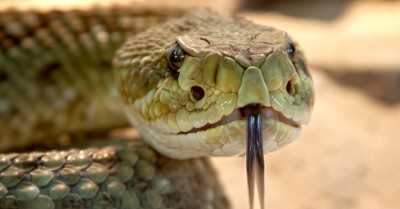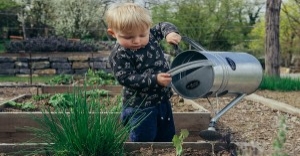As part of their educational programmes, early education and care services may be situated in or travel to bush environments where it is known that snakes may be active and present. Although they are more common in the spring or summer, snakes can be found throughout the year, especially on sunny days. The following article provides information on What Attracts Snakes Into The Outdoor Area or Early Childhood Service, How Can We Snake-proof Our Service, Strategies to Implement To Minimise The Risk Of Snakes and more.
What Attracts Snakes Into The Outdoor Area or Early Childhood Service
Snakes are often attracted to yards and services when food and shelter are unknowingly provided by human inhabitants. Brown snakes and taipans eat rodents and are attracted to gardens or farm sheds to hunt rats and mice. Pythons regularly enter chicken pens and aviaries to prey on the occupants. They are also found in roof cavities hunting for rats and possums. Brown tree snakes are specialists at invading aviaries, often becoming trapped inside after they have eaten a bird. These snakes can also be found at night hunting for geckos around window sills in the centre. Common tree snakes actively hunt frogs during the day and are often seen around the centre and garden where frogs occur.
Services and yards can also be used by snakes for shelter. Carpet pythons are regularly found curled up in ceilings, enjoying the security and warmth. A variety of snake species is often encountered in places such as timber piles and under sheets of corrugated iron.
How Can We Keep Snakes Out Of The Outdoor Area?
You can take measures to reduce the attractiveness of your outdoor environment or service to snakes. If you have a rock wall or other structure that has the potential to house frogs and rats, and in turn attract snakes, discourage these animals by blocking holes. Avoid creating a habitat for snakes by keeping a tidy, well-maintained outdoor area and shed. Actively discourage rats and mice, and snake-proof your aviaries and poultry pens (if any).
How Can We Snake-Proof Our Service?
Ensure that the outdoor area is tidy with shrubs and gardens kept away from the service. Snakes will shelter in services, under shrubs and in timber stacks to avoid the hottest parts of the day. It is also important to ensure that food scraps are disposed of properly to discourage rats and mice as snakes are attracted to places where they can obtain food.
Blocking off as many potential access points as possible can significantly reduce the chance of snakes entering the service. Install screens on doors and windows. Block any holes around the service including those between the roof and ceiling. Extra care should be taken during summer when the snakes are most active. In areas that experience flooding, snakes will move to higher ground during a flood. Take extra precautions at these times.
Strategies to Implement To Minimise The Risk Of Snakes
Management Team
- conduct a risk assessment to identify the potential risk of encountering a snake on the service premises
- develop an emergency plan and procedure to include the response if encountering a snake and actions required in case of a snake bite
- provide a snake identification chart for snakes found in our local area for educators and staff
- provide emergency first aid training for all educators and staff annually and are updated each ‘snake season’ of immobilisation techniques
- ensure an emergency action plan is displayed in a prominent location should a snake bite occur
- ensure First Aid Kits contain compression bandages
- ensure daily inspections of the outdoor and indoor learning environment are conducted prior to children arriving at the service
- ensure lawns and gardens are well maintained
- cut any long grass around the boundaries of the premises
- remove snake habitats such as piles of timber, compost heaps or sheets of galvanized iron from around the premise
- maintain clean surroundings around any animal housing/cages to reduce any potential mice population (a food source for snakes)
- reptile proof any chicken or other animal enclosures
- ensure pet food and water bowls are not accessible to wildlife
- provide information to families about snake awareness and recommended responses if encountering a snake
- educate children about how to respond to a snake sighting or encounter at the service or when participating on an excursion
- have the contact number of Wires or other licensed snake handler readily available to assist in rescuing the snake if the snake cannot return to its natural environment- [for example the snake is located in a garden shed or storage container; the snake is located inside and is unable to exit the building/premises]
- follow procedures for notification of a serious incident in the unlikely event of a staff member or child being bitten by a snake
- complete an Illness, Accident or Trauma Record
- ensure all educators and staff wear enclosed footwear at all times
Educators
- examine the Service grounds during their daily indoor and outdoor safety checks to ensure no snakes are sighted
- ensure no animal food or water is left out for wildlife overnight
- become familiar and confident with the Service’s emergency evacuation policies and procedures in case of a snake encounter or snake bite
- always leave snakes alone
- be aware of snake species inhabiting the local area
- participate in annual First Aid training
- ensure the first aid kit is easily accessible and contains compression bandages
- notify the Nominated Supervisor/Approved Provider immediately if a snake is sighted
- wear adequate clothing and enclosed shoes at all times
- educate children about snakes and snake bite prevention behaviours
- ensure children are reminded on a regular basis that if they encounter a snake, to move away quietly and report the sighting to an educator
- educate children not to put their hands into hollow logs or rock crevices
What To Do If You See A Snake In Your Early Childhood Service
If a snake is sighted or encountered at the Service educators and staff will:
- inform children to move away quietly
- remove all children and staff from the immediate area, or evacuate the room until the snake is removed if indoors
- isolate this area until the snake is removed or moves
- note the location of the snake
- if possible, monitor the snake from a safe distance (at least 5 metres away)
- if the snake remains and is perceived to be a threat, contact the local snake handler or WIRES
- if indoors, close doors to the room and place towels along the bottom of the doors so the snake cannot move to another area and wait for the snake handler to remove the snake
- do not approach the snake or try to contain it
Who Should We Contact If We Have A Snake In The Service?
If there is a chance that a snake could find its way into your service you should have the number of a commercial snake catcher on hand. Snakes found on your premises can be removed and relocated by snake catchers authorised under the Nature Conservation Act 1992. Contact details of local snake catchers can be obtained through the Yellow Pages or via the internet. It is important to remember that snakes are an important part of the environment and the relocated snake is often replaced by another living nearby.
Snake Catcher Directory
Further Reading
Australian Snake Posters - The Australian Snake Posters show images of popular Australian snakes and their names. These can be used to teach children about snakes found throughout Australia.
Australian Snakes Information Posters - The Australian Snakes Information Posters provide information on the 10 most popular snakes in Australia, It also includes information about where it is found, other names for the snake and brief information about the snake.
Red-Bellied Black Snake Found Hiding Behind Child's Bag - An Educator from a Gold Coast early childhood centre, discovered a red-bellied black snake curled up behind a child's backpack, initially thought it was a toy snake until she saw it breathing.
Toddler Allegedly Bitten By A Snake In A QLD Early Childhood Service - On November 22nd 2022, a two-year-old was allegedly bitten by a snake at a Queensland early childhood service.
Reference:
Snake Awareness Policy, Kinburra Preschool
FAQ Snakes, Department Of Environment and Science, Queensland







 As an Educator in Australia, your pay rate falls under the Children’s Services Award 2010. This award states the minimum amount that an employer can
As an Educator in Australia, your pay rate falls under the Children’s Services Award 2010. This award states the minimum amount that an employer can Writing a personal philosophy is a great way for others to read what your values and beliefs are in regard to early childhood education. The
Writing a personal philosophy is a great way for others to read what your values and beliefs are in regard to early childhood education. The When going for a job interview the most nerve-wracking part of it, is answering those questions that may be asked. The following article provides a
When going for a job interview the most nerve-wracking part of it, is answering those questions that may be asked. The following article provides a Sometimes you know that it’s time to move on from your current centre. You may have found another centre to work with, your circumstances may
Sometimes you know that it’s time to move on from your current centre. You may have found another centre to work with, your circumstances may The “Preschool Room” is final step for you, as a childcare professional, to prepare your group of children and their families for school and making
The “Preschool Room” is final step for you, as a childcare professional, to prepare your group of children and their families for school and making Progressive mealtimes are giving an opportunity for children to choose when they want to eat within a certain timeframe instead of eating at a set
Progressive mealtimes are giving an opportunity for children to choose when they want to eat within a certain timeframe instead of eating at a set Celebrating children's birthdays is important to the child and their families. It's a special occasion that focuses on the individual child and celebrates the day
Celebrating children's birthdays is important to the child and their families. It's a special occasion that focuses on the individual child and celebrates the day When Parents are sending food from home, it's important that they understand they need to bring snacks and pack a lunch that is healthy and
When Parents are sending food from home, it's important that they understand they need to bring snacks and pack a lunch that is healthy and The NQS mandates services to take an active role in caring for the environment and contributing to a sustainable future. According to NQS Standard 3.3,
The NQS mandates services to take an active role in caring for the environment and contributing to a sustainable future. According to NQS Standard 3.3, One of the best ways to encourage children to grow a garden to develop a range of skills is to create an edible garden. An
One of the best ways to encourage children to grow a garden to develop a range of skills is to create an edible garden. An


